

In contrast to Asus and Gigabyte, which have also changed to 2.5 slot designs for the cooler, EVGA (and fans of a narrow structure) stays true to itself with the GTX 1080 Ti FTW3 Gaming and squeezes the technical possibilities of the ... The board at a glance
Now let's look at the board, a look that is definitely worth it. Of course, the most interesting thing is the power supply for the GPU with its 5 double phases - but we'll get to these details right away ... Cooling concept and implementation
The back of the board is conspicuously inconspicuous and shows the dark traces of the glued-on thermal pads between the backplate and the board. Which would have made us look elegant at the cooling.
Tue... Benchmarks in 2560 x 1440 pixels
We have deliberately dispensed with Full HD (1920 x 1080p) as the EVGA GTX 1080 Ti FTW3 Gaming races into the CPU limit even in the highest settings. In WQHD (2560 x 1440 pixels), on the other hand, the actual arb... Benchmarks in 3840 x 2160 pixels
The EVGA GTX 1080 Ti FTW3 Gaming is in this high resolution, depending on the game, between 8 and approx. 10 percent faster than a GeForce GTX 1080 Ti Founders Edition or TitanX (Pascal). Overall, many titles ... When it is up to the power, we first need to know that the card with the factory settings at approx. 280 watts has been set a rather average Power Target, but one could manually raise it to just over 350 watts, which then ... In fact achievable clock rates
The actual achievable clock is subject to some influences. Even if GPU quality plays a bigger role here - unfortunately it cannot be influenced as the only element. And so it is in the end well möglic... Fan control and curves
We already wrote about the temperature range-controlled fans of the EVGA GTX 1080 Ti FTW3 Gaming, although it was interesting to follow the course of all three fans at first. The control measurement with a laser... Summary
In order to do justice to the EVGA GTX 1080 Ti FTW3 Gaming, we have to take a little further. After all, EVGA has shown courage and has not simply blindly followed the current trend towards ever thicker cards. With this, you can ...
When it is up to the power, we first need to know that the card with the factory settings at approx. 280 watts has been set a rather average Power Target, but one could manually raise it to just over 350 watts, which would be more than sufficient. This factory power target of 280 watts is of course fully exploited in gaming and stress testing. The increase in the afterburner to the maximum shows in the end, however, instead of the possible 350 watts only about 330 watts, because at some point the card simply runs out of boost steps (cooling).
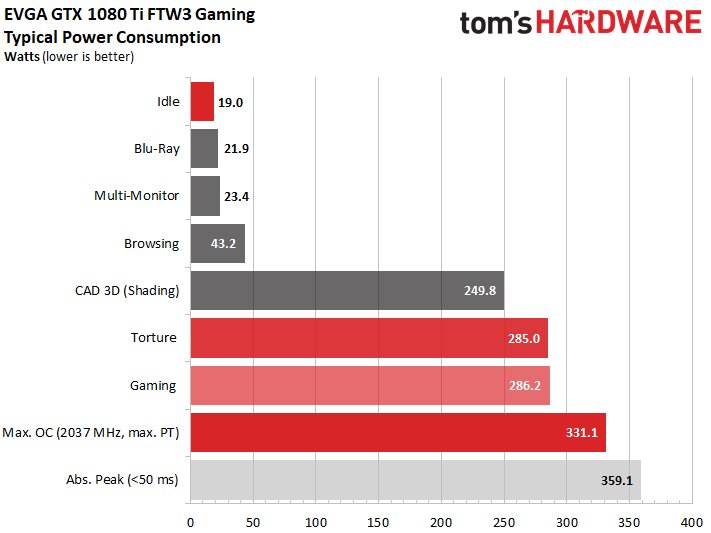 The chip on the test pattern is lower average, but still good enough to reach 1,062 V in the cold state of 1949 MHz – provided the card stays well below 50°C. In the further course, however, the voltage drops to 1,012 V due to temperature and for a short time to 1.0 V.
The chip on the test pattern is lower average, but still good enough to reach 1,062 V in the cold state of 1949 MHz – provided the card stays well below 50°C. In the further course, however, the voltage drops to 1,012 V due to temperature and for a short time to 1.0 V.
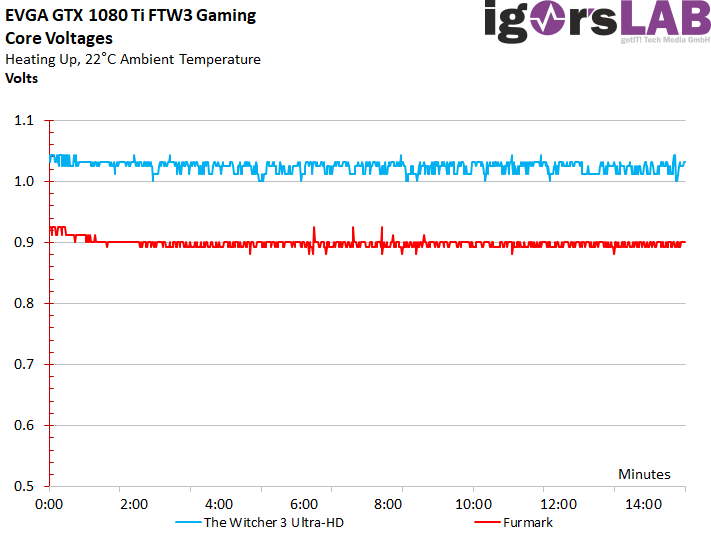
More about the gaming loop
Now let's look at the curve for the power consumption separately according to the individual supply rails (rails) in a higher resolution over the period of two minutes. Despite our intelligent low-pass filter, some spikes remain visible, which can then be used up to approx. 343 watts. On average, however, the map is pretty much at the level of the set power target of 300 watts.
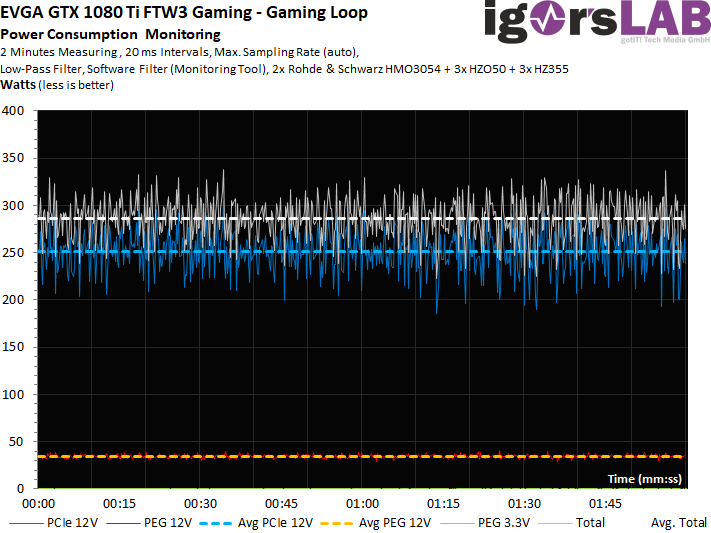
For this purpose, the curves of the currents look identically hectic:
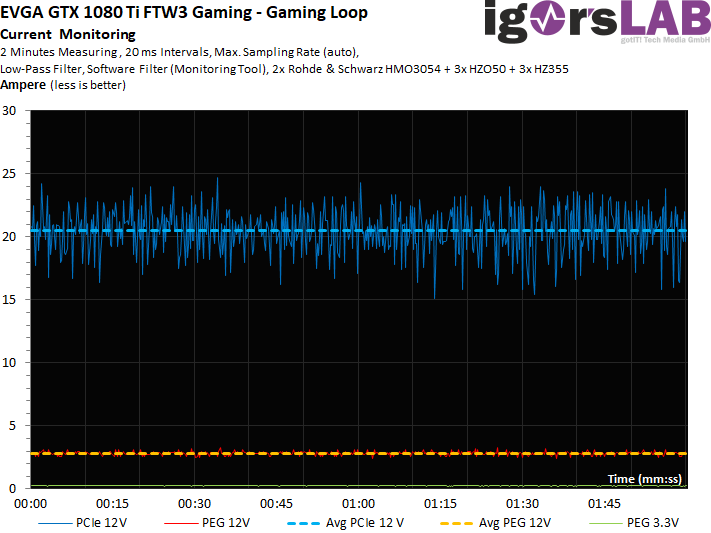
Torture test in detail
Since the load is more constant, the power consumption increases again somewhat as an average value, but the peaks are almost completely eliminated. We see very nicely where Boost is already starting to brutally throttle the power consumption and the card stays just below the power target at the average.
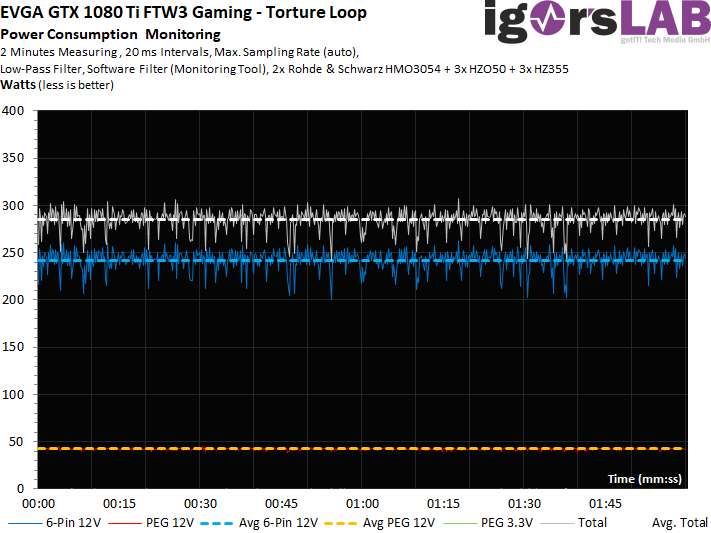
Again, analogously, only the view of the flowing currents:
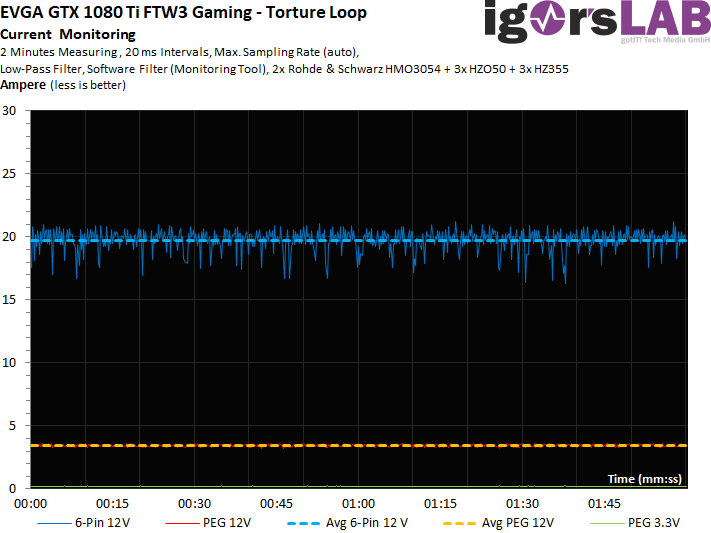
Utilization of the motherboard slot
This point has been repeatedly demanded by readers since the launch of the Radeon RX 480 (also for Nvidia cards), so we will now include this point in every test. With the card tested today, however, the concern is unfounded, because the slot is used rather moderately with just over 3 amps.
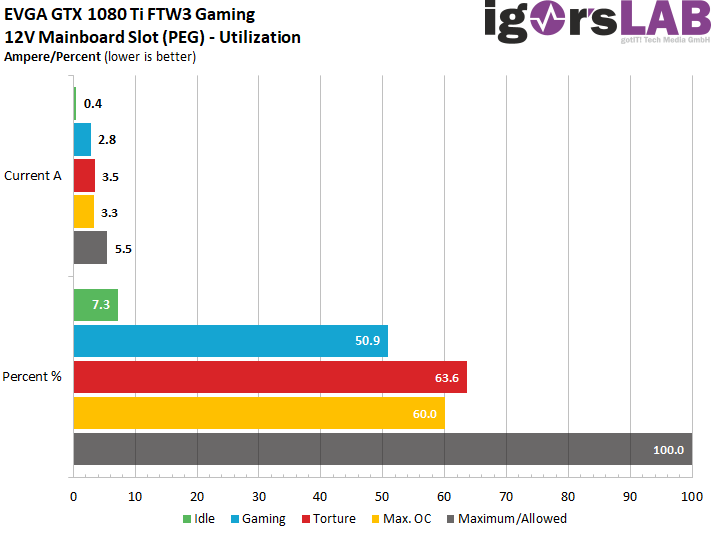
 The chip on the test pattern is lower average, but still good enough to reach 1,062 V in the cold state of 1949 MHz – provided the card stays well below 50°C. In the further course, however, the voltage drops to 1,012 V due to temperature and for a short time to 1.0 V.
The chip on the test pattern is lower average, but still good enough to reach 1,062 V in the cold state of 1949 MHz – provided the card stays well below 50°C. In the further course, however, the voltage drops to 1,012 V due to temperature and for a short time to 1.0 V.




































Kommentieren